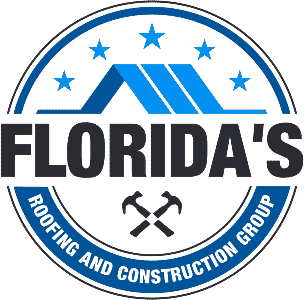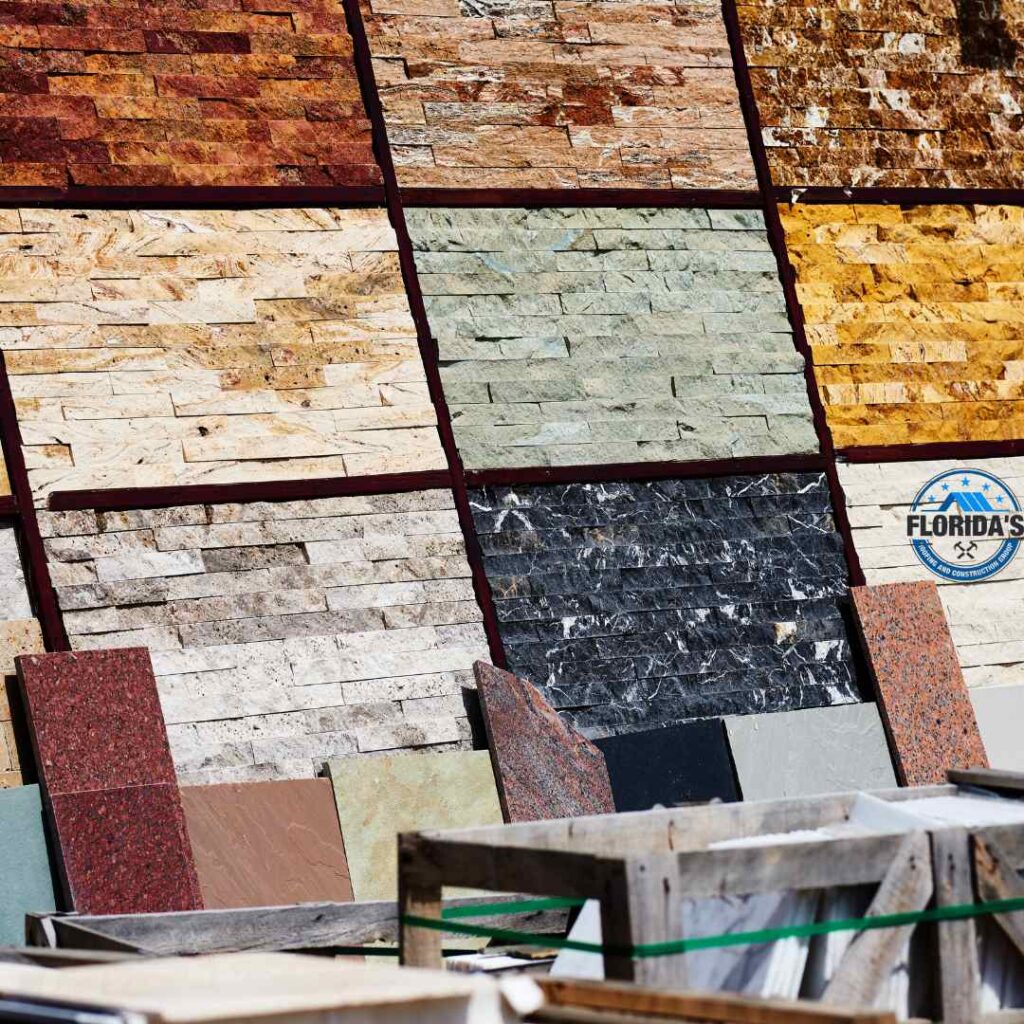Choosing the Right Construction Materials for Florida’s Climate
Building a house in Florida or any renovation work requires the proper choice of construction material. The hot and humid weather condition, and the tendency to be attacked by hurricanes and tropical storms, makes the state rather challenging for homeowners and contractors alike. Materials chosen are not just because they look good but because they can withstand extreme heat, high humidity, and even terror-stricken weather conditions. Inappropriate materials increase maintenance costs and energy consumption besides the risk of structural damage at a later date.
Here are some of the most appropriate construction materials for the specific climate of Florida, taking into account durability and effectiveness in terms of energy efficiency and resistance against moisture, pests, and heat. We shall also provide a practical guide on how to choose lasting and performing materials in Florida’s demanding environment.
1. The Impact of Florida’s Climate on Construction Materials
Before diving into the specific materials, it’s important to understand how Florida’s climate impacts construction. The state experiences year-round heat, frequent rain, high humidity levels, and the occasional hurricane. These environmental factors can deteriorate construction materials if they are not carefully selected.
- Heat: In regions like Florida, high temperatures can cause materials to expand and contract, leading to cracks and other structural issues over time.
- Humidity: Constant moisture in the air can lead to mold, mildew, and wood rot. It can also accelerate rust in metals and reduce the lifespan of certain materials.
- Storms and Hurricanes: Florida is no stranger to extreme weather. Strong winds, heavy rain, and flying debris can damage roofs, windows, and siding. Impact-resistant materials are necessary to ensure the structure can withstand hurricane-force winds.
2. Roofing Materials for Florida’s Climate
Roofing is one of the most critical components of any home in Florida due to the frequent exposure to storms and heat. Choosing the right roofing materials is essential to protect the home from both water intrusion and heat buildup.
Metal Roofing
Metal roofs have become increasingly popular in Florida, particularly in coastal areas. Metal is highly durable, fire-resistant, and can withstand wind speeds up to 160 miles per hour, making it an excellent choice for hurricane-prone regions. Additionally, metal reflects the sun’s rays, helping to reduce heat absorption and lower energy bills.
- Advantages:
- Extremely durable, with lifespans of up to 50 years.
- Reflects sunlight, reducing cooling costs.
- Fire-resistant and environmentally friendly.
- Can withstand high winds and flying debris during storms.
- Considerations:
- Higher upfront cost compared to other roofing options.
- May require insulation to prevent noise from rain or hail.
Clay or Concrete Tiles
Another roofing option suited for Florida’s hot and humid climate is clay or concrete tiles. These tiles are not only durable but are also excellent insulators, helping to keep homes cooler during the hot summer months. Additionally, clay and concrete tiles are resistant to moisture and are fireproof, adding an extra layer of protection.
- Advantages:
- Resistant to rot, mold, and fire.
- Long-lasting, with a lifespan of 40-50 years.
- Provides excellent insulation, reducing cooling costs.
- Considerations:
- Heavy, requiring strong support structures.
- Higher upfront cost compared to asphalt shingles.
- Can be more vulnerable to cracking during severe storms.
Asphalt Shingles
While asphalt shingles remain a popular choice due to their lower cost, they may not be the best option for Florida’s extreme climate. They are prone to damage from high winds and may not offer the same level of protection against heat and moisture as metal or tile roofs.
- Advantages:
- Affordable and widely available.
- Easy to install and replace.
- Considerations:
- Shorter lifespan (15-20 years) in hot, humid environments.
- Prone to damage from high winds and UV exposure.
3. Siding and Exterior Wall Materials
The exterior walls of a building face constant exposure to Florida’s sun, rain, and humidity. Selecting the right siding materials can protect your home from moisture, prevent mold growth, and enhance energy efficiency.
Stucco
Stucco is a popular siding material in Florida due to its durability and resistance to heat. It is composed of cement, sand, and lime, which makes it a great insulator and resistant to fire. Additionally, stucco can be applied in multiple layers, making it highly customizable in terms of texture and color.
- Advantages:
- Resistant to heat, fire, and moisture.
- An excellent insulator, helping to regulate indoor temperatures.
- Customizable finishes for aesthetic appeal.
- Considerations:
- Requires proper installation to avoid cracks.
- May require periodic maintenance to seal small cracks that can allow moisture to penetrate.
Vinyl Siding
Vinyl siding is another popular choice due to its affordability and resistance to moisture. Vinyl does not absorb water, which makes it resistant to mold and mildew growth in Florida’s humid climate. It also comes in various colors and styles, allowing for a customizable look without the high maintenance requirements of wood.
- Advantages:
- Affordable and low-maintenance.
- Resistant to moisture and pests.
- Available in a wide range of colors and textures.
- Considerations:
- Can warp or crack in extreme heat.
- It may not offer the same level of durability as other materials.
Fiber Cement Siding
Fiber cement siding is an excellent choice for Florida homes. It is composed of cement, sand, and cellulose fibers, making it highly durable, fire-resistant, and able to withstand harsh weather conditions. Fiber cement is also resistant to pests, rot, and moisture, which are common concerns in Florida.
- Advantages:
- Extremely durable and resistant to moisture and pests.
- Fire-resistant and can withstand high winds.
- Requires little maintenance and can mimic the appearance of wood or stucco.
- Considerations:
- Higher installation cost compared to vinyl.
- Heavy, requiring proper support structures.
4. Insulation Materials
Proper insulation is critical in Florida to maintain a comfortable indoor temperature and reduce energy costs. Insulation must be chosen based on its ability to resist heat transfer and prevent moisture buildup.
Spray Foam Insulation
Spray foam insulation is highly effective in hot and humid climates like Florida. It creates an airtight seal that prevents air leaks, helping to keep the home cool and energy-efficient. Spray foam also acts as a moisture barrier, reducing the risk of mold growth.
- Advantages:
- Excellent air sealing properties, improving energy efficiency.
- Resistant to moisture, preventing mold and mildew growth.
- Long-lasting and durable.
- Considerations:
- Higher upfront cost compared to other insulation options.
- Requires professional installation.
Fiberglass Insulation
Fiberglass insulation is a more affordable option that is commonly used in Florida homes. While it does not provide the same level of air sealing as spray foam, it is still effective at insulating and reducing energy costs. However, fiberglass must be installed correctly to avoid moisture issues in Florida’s humid climate.
- Advantages:
- Affordable and widely available.
- Provides effective insulation against heat.
- Considerations:
- Less effective at preventing air leaks.
- Can absorb moisture if not properly installed, leading to mold issues.
Reflective Insulation
Reflective insulation, or radiant barriers, are particularly effective in Florida’s climate, where the sun’s intense rays can significantly raise indoor temperatures. These barriers reflect radiant heat away from the home, reducing the need for air conditioning and lowering energy bills.
- Advantages:
- Reduces cooling costs by reflecting heat.
- Easy to install in attics and other areas with direct sunlight exposure.
- Considerations:
- Less effective in cooler climates or areas without significant sun exposure.
- Works best when combined with other insulation types.
5. Windows and Doors
Windows and doors are vulnerable points in any building, especially in Florida’s hurricane-prone areas. Choosing impact-resistant windows and doors can provide added protection during storms and improve energy efficiency by reducing heat transfer.
Impact-Resistant Windows
Impact-resistant windows are designed to withstand the high winds and flying debris associated with hurricanes. These windows have a layer of laminate between two panes of glass, providing extra strength and durability. They are also highly energy-efficient, helping to reduce heat transfer and lower cooling costs.
- Advantages:
- Protects against wind, debris, and break-ins.
- Energy-efficient, reducing cooling costs.
- Noise-reducing, offering a quieter indoor environment.
- Considerations:
- Higher cost compared to standard windows.
- Requires professional installation.
Steel or Fiberglass Doors
Steel and fiberglass doors are excellent choices for Florida homes due to their durability and resistance to weather-related damage. Both materials are resistant to warping, rotting, and rust, making them ideal for Florida’s humid and storm-prone climate.
- Advantages:
- Durable and resistant to moisture, pests, and weather damage.
- Provides excellent insulation and security.
- Low maintenance and long-lasting.
- Considerations:
- Higher cost than traditional wooden doors.
- Heavier requires strong hinges and frames for support.
6. Flooring Materials
In Florida, where humidity and moisture are constant challenges, choosing the right flooring material is essential to prevent warping, mold, and other moisture-related issues.
Ceramic or Porcelain Tile
Ceramic and porcelain tiles are popular choices for flooring in Florida due to their durability, water resistance, and ease of maintenance. These tiles do not absorb moisture, making them ideal for humid climates. They also stay cool underfoot, which is a bonus in Florida’s hot weather.
- Advantages:
- Resistant to moisture, mold, and mildew.
- Durable and easy to clean.
- Stays cool in hot weather, improving comfort.
- Considerations:
- It can be slippery when wet.
- Requires proper sealing of grout lines to prevent mold buildup.
Vinyl Flooring
Vinyl flooring is another great option for Florida homes. It is water-resistant, easy to install, and available in various styles, including options that mimic the appearance of wood or tile. Vinyl is also softer underfoot than tile, providing a more comfortable surface to walk on.
- Advantages:
- Water-resistant and low-maintenance.
- Affordable and available in a wide range of styles.
- Comfortable and durable.
- Considerations:
- It may not offer the same long-term durability as tile.
- Susceptible to fading from prolonged sun exposure.
7. Final Thoughts
Choosing the right construction material to suit Florida’s hot and humid climate would thus involve careful consideration with respect to durability, moisture resistance, and energy efficiency. If you are putting up a new home or rehabilitating an old one, then it goes materials that can stand up to the extreme weather conditions of Florida would save you money and hassle in the long run.
Metal roofs, fiber cement siding, impact-resistant windows, and spray foam insulation are all great choices that shield your home from the elements and provide energy efficiency improvements. Investing in quality materials set up to accommodate Florida’s climate will give you a long time of comfort, durability, and protection in the home.
Never settle for quality when it comes to construction in Florida. It is actually the right material that makes the difference between your house’s performance and longevity and will ensure safety, energy efficiency as well as resistance to the challenges of climate Florida.

